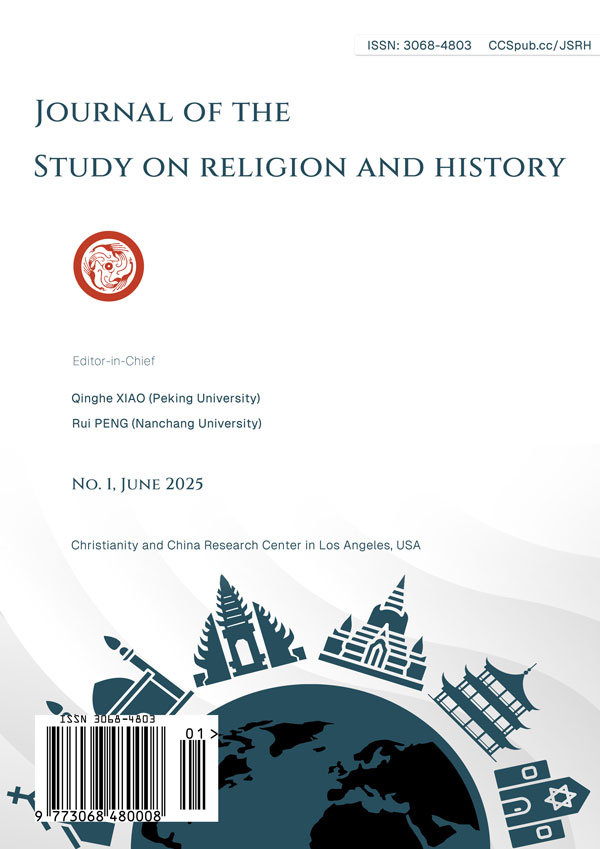Educational Development and the Pace of Religious Change: How the Sequence of Institutional Change in China and Japan Shaped the Emergence of Modern Religious Policy
Published 2025-07-02
Keywords
- Education, China, Japan, Religion

This work is licensed under a Creative Commons Attribution-NonCommercial-NoDerivatives 4.0 International License.
How to Cite
Abstract
In the mid 1800s, both China and Japan began reform movements in order to face the threat of increasing Western encroachment. Central to that reform were adaptations of the educational systems that helped prepare the revolutionary leaders of the Meiji Restoration in Japan and the Xinhai Revolution in China. As part of the state formation process, each country determined the role that religion would play in the new modern state. The policies each chose were significantly influenced by the educational context out of which those new leaders had emerged. Yet those leaders were shaped by the pace and sequence of educational reform relative to the timing of political revolution. Japanese leadership in the Meiji era reflected the kokugaku and Confucian education they had received. Similarly, Nationalist leadership exhibited the Euro-American educational context, whether threw study abroad or at Western schools at home, in the policy choices they made.
Counts
Views: 72 / Downloads: 14Downloads
References
- Abbott, Andrew. 2001. Time Matters: On Theory and Method. 1st edition. Chi-cago: University of Chicago Press.
- Biggerstaff, Knight. 1961. Earliest Modern Government Schools in China. First Edition. Cornell University Press.
- Dore, Ronald. 1965. Education in Tokugawa Japan. London: Routledge.
- Duara, Prasenjit. 1991. Culture, Power, and the State: Rural North China, 1900-1942. 1st edition. Stanford, Calif: Stanford University Press.
- Dunch, Ryan. 2001. Fuzhou Protestants and the Making of a Modern China, 1857-1927. New Haven: Yale University Press.
- Elman, Benjamin A. 2013. Civil Examinations and Meritocracy in Late Imperial China. Harvard University Press. https://doi.org/10.4159/harvard.9780674726048.
- Fishman, Robert M. 2011. “Democratic Practice after the Revolution: The Case of Portugal and Beyond.” Politics & Society 39, no. 2: 233–67. https://doi.org/10.1177/0032329211405439.
- Fishman, Robert M., and Omar Lizardo. 2013. “How Macro-Historical Change Shapes Cultural Taste: Legacies of Democratization in Spain and Por-tugal.” American Sociological Review 78, no. 2: 213–39. https://doi.org/10.1177/0003122413478816.
- Goldstone, Jack A. 1998. “Initial Conditions, General Laws, Path Dependence, and Explanation in Historical Sociology.” American Journal of Sociology 104, no. 3: 829–45. https://doi.org/10.1086/210088.
- Harrison, Henrietta. 2005 The Man Awakened from Dreams: One Man’s Life in a North China Village, 1857-1942. Stanford, Calif: Stanford University Press.
- Jansen, Marius B. 1959 “Takechi Zuizan and the Tosa Loyalist Party.” The Journal of Asian Studies 18, no. 2: 199–212. https://doi.org/10.2307/2941682.
- Johnson, Eunice V. 2014. Timothy Richard’s Vision: Education and Reform in Chi-na, 1880-1910. Edited by Carol Lee Hamrin. Studies in Chinese Chris-tianity. Eugene, Oregon: Pickwick Publications.
- Keenan, Barry. 1994. “14. Lung-Men Academy in Shanghai and the Expansion of Kiangsu’s Educated Elite, 1865-1911.” In Education and Society in Late Imperial China, 1600-1900, edited by Benjamin A. Elman and Al-exander Woodside, 493–524. University of California Press.
- Lagerwey, John. 2010. China: A Religious State. Hong Kong University Press.
- Lincicome, Mark Elwood. 1995. Principle, Practice, and the Politics of Educational Reform in Meiji Japan. University of Hawaii Press.
- Liu, Kwang-Ching. 2023. “Education for Its Own Sake: Notes on Tseng Kuo-Fan’s Family Letters.” In Education and Society in Late Imperial China, 1600-1900, edited by Benjamin A. Elman and Alexander Wood-side, 76–108. University of California Press.
- Mahoney, James. 2000. “Path Dependence in Historical Sociology.” Theory and Society 29, no. 4: 507–48.
- Marshall, Byron K. 1977. “Professors and Politics: The Meiji Academic Elite.” Journal of Japanese Studies 3, no. 1: 71–97. https://doi.org/10.2307/132013.
- Bitō, Masahide. 1984. “Religion and Society in the Edo Period, as Revealed in the Thought of Motoori Norinaga.” Modern Asian Studies 18, no. 4: 581–92.
- Mori, Arinori. 1873. Education in Japan: A Series of Letters Addressed by Prominent Americans to Arinori Mori. New York: D. Appleton.
- Pierson, Paul. 2004. Politics in Time: History, Institutions, and Social Analysis. First Edition. Princeton: Princeton University Press.
- Platt, Brian. 2004 Burning and Building: Schooling and State Formation in Japan, 1750-1890. Cambridge: Harvard Univ Asia Center.
- Qian Yimin. 2005. LI Denghui zhuan李登辉传The Biography of LI Denghui. Shanghai: Fudan University Press.
- Rawski, Evelyn S. 1979. Education and Popular Literacy in Ch’Ing China. Ann Arbor: Univ of Michigan Press.
- Rubinger, Richard. 2007. Popular Literacy in Early Modern Japan. Honolulu: University of Hawaii Press.
- Sewell Jr, William H. 2005. Logics of History: Social Theory and Social Transfor-mation. Chicago Studies in Practices of Meaning edition. Chicago: University of Chicago Press.
- Song Shangjie. 2008. The Journal Once Lost - Extracts From The Diary of John Sung. Singapore: Armour Publishing.
- Susumu, Shimazono, and Regan E. Murphy. 2009. “State Shinto in the Lives of the People: The Establishment of Emperor Worship, Modern Nation-alism, and Shrine Shinto in Late Meiji.” Japanese Journal of Religious Studies 36, no. 1: 93–124.
- Takayoshi, Kido. 1983. The Diary of Kido Takayoshi: 1868-1871. Translated by Sidney Brown. Vol. 1. Tokyo: University of Tokyo Press.
- Thompson, Roger R. 1995. China’s Local Councils in the Age of Constitutional Re-form, 1898-1911. Cambridge, Mass: Harvard University Asia Center.
- Van Straelen, Henry. 1952. Yoshida Shoin, Forerunner of the Meiji Restoration. Leiden: Brill. https://brill.com/display/title/5207.
- Wasserstrom, Jeffrey N. 1991. Student Protests in Twentieth-Century China: The View from Shanghai. Stanford University Press.
- Watanabe, Hiroshi. 2012. A History of Japanese Political Thought, 1600-1901. Translated by David Noble. Tokyo: International House of Japan.
- Wong Ming-Dao. 1981. A Stone Made Smooth. Southampton England, Robe-sonia, Pa.: O M F Books.
- Wright, Mary Clabaugh. 1978. The Last Stand of Chinese Conservatism: The T’ung-Chih Restoration, 1862-1874. Stanford (Calif.): Stanford Univ Press.
- Zhou Yongming. 1999. Anti-Drug Crusades in Twentieth-Century China. Lanham, Md: Rowman & Littlefield Publishers.

